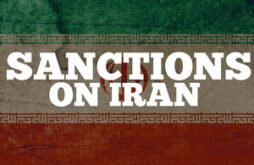RFL/RE – Iran’s Islamic Revolutionary Guards Corps (IRGC) has sparked anger by using media proxies to crowdsource the identification and reporting to authorities of individuals photographed at antiestablishment protests, including indirectly through social media like Twitter.
The effort came as a week of demonstrations and violent unrest across the country eased but were said to be continuing in some places, with protesters chanting slogans against rising prices, corruption, and Iran’s clerically dominated leadership.
The protest slowdown follows days of increasing shows of force in cities and towns across the country and a day of televised pro-government demonstrations to counter the eruption of public anger.
The Gerdab.ir website, which was launched a decade ago by the IRGC, posted images of suspected protesters in several cities, including two of the earliest hot spots, provincial capitals Kermanshah and Zanjan.
Gerdab called for the public to help identify the individuals, repeating a tactic it employed during street demonstrations in 2009 that attracted millions to complain of irregularities in the reelection of then-President Mahmud Ahmadinejad.
Gerdab pledged to release more pictures of “elements behind the unrest” and “rioters.”
Iranian Supreme Leader Ayatollah Ali Khamenei has blamed foreign “enemies,” but President Hassan Rohani has acknowledged that public discontent has played a role in the protests, one of the most serious domestic challenges to Iran’s leadership in decades.
Pro-government supporters march during a rally in support of the regime in the city of Mashhad on January 4.
Pro-government supporters march during a rally in support of the regime in the city of Mashhad on January 4.
Gerdab’s statements and images for identification have in turn been carried by news sites that include the hard-line Mashregh, Khabaronline.ir, and Jahannews.com.
“If you have any details about those in the pictures or any kind of information, including pictures, videos, e-mail, or any complaint about those causing unrest, report it via [us],” Gerdab said in a statement.
Official Crackdown
Monitoring and activist groups say official sources have acknowledged more than 1,000 arrests around the country, including at least 450 in the capital, Tehran.
Iran’s hard-line Tasnim news agency, which was launched during the Arab Spring movement in the region in 2012 in part to “defend [Iran] against negative media propaganda” and is also said to be affiliated with the IRGC, has posted pictures of alleged protesters in the Iranian capital on its Twitter feed while calling on followers to identify and report them to the authorities.
Tasnim, whose coverage frequently reflects hard-line Iranian views, also posted contact numbers for Iran’s Intelligence Ministry, the IRGC, and police forces for browsers to call and provide information on the individuals in the photos.
Tasnim alleged on its Persian-language Twitter feed that individuals circled in red in some photos are leaders of “the rioters” in Tehran, which has been less directly affected by the current protests than during the 2009 unrest.
Twitter is blocked in Iran, although it is openly used by state officials including Khamenei, Rohani, and Foreign Minister Mohammad Javad Zarif, and official and semiofficial news agencies used it to spread news and other information.
But many Iranians access Twitter and other social media like Telegram through antifiltering tools.
‘Stalinist Tactics’
Tasnim’s move outraged some Iranian users, who called on Twitter to take action.
“This pro-IRGC news agency is putting protesters’ life at a very serious risk,” Amir Rashidi, an Internet security researcher with the New York-based Center for Human Rights in Iran, wrote on Twitter on January 3.
Nader Hashemi, a professor of Middle Eastern politics at the University of Denver, tweeted, “Predictably, IRGC and its affiliates resort to Stalinist tactics of intimidation to crush protests.”
Amin Sabeti, a London-based expert on Iranian Internet, is among those who have reported Tasnimnews_FA to Twitter for what he regards as a possible violation of the social network’s rules of use. “Tasnim’s move is a clear breach of Twitter’s rules on abusive behavior and also abuse and hateful conduct,” Sabeti tells RFE/RL.
Twitter says it prohibits “behavior that crosses the line into abuse, including behavior that harasses, intimidates, or uses fear to silence another user’s voice.”
It also says that users “may not engage in the targeted harassment of someone, or incite other people to do so. We consider abusive behavior an attempt to harass, intimidate, or silence someone else’s voice.”
Sabeti says those Tasnim reporters and editors who have shared images of protesters and called for their identification should also be “disciplined.”
The Tasnim tweets remained online on January 4, some 24 hours after being posted.
Golnaz Esfandiari is a senior correspondent with RFE/RL.
 Shabtabnews In this dark night, I have lost my way – Arise from a corner, oh you the star of guidance.
Shabtabnews In this dark night, I have lost my way – Arise from a corner, oh you the star of guidance.


